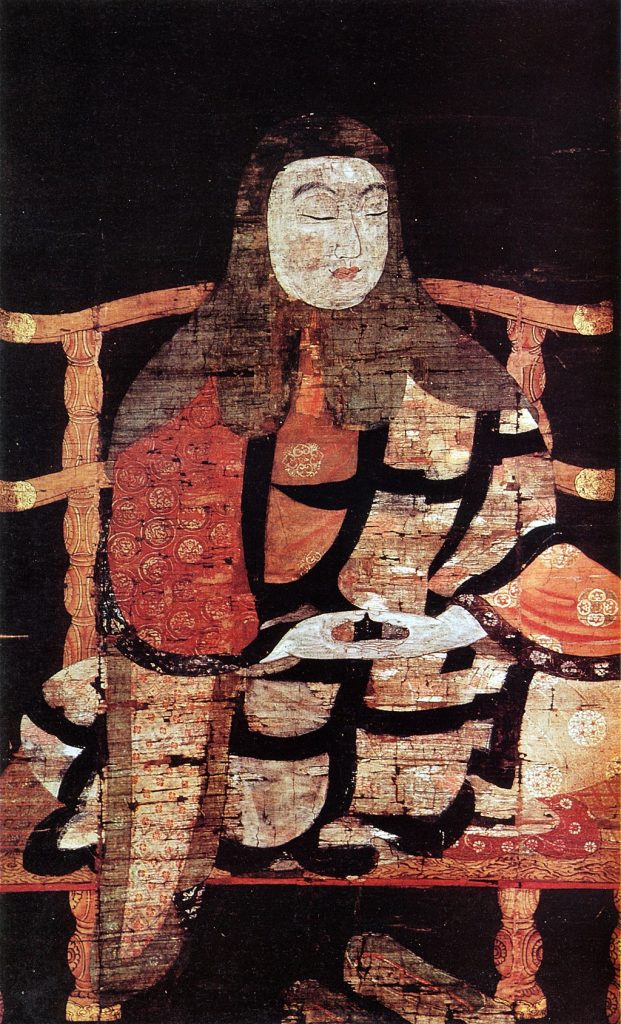1. Chinese Culinary
1.1 Eight Cuisines in China [1]
Chinese cuisine is an important part of Chinese culture, which includes cuisine originating from the diverse regions of China, as well as from Chinese people in other parts of the world. The preference for seasoning and cooking techniques of Chinese provinces depends on differences in historical background and ethnic groups. Geographic features including mountains, rivers, forests, and deserts also have a strong effect on the local available ingredients, considering the climate of China varies from tropical in the south to subarctic in the northeast. As shown in Figure 9.1, the most praised “Eight Popular Regional Cuisines” include those from Shandong, Canton, Sichuan, Hunan, Jiangsu, Zhejiang, Fujian, and Anhui (http://hakkasan.com/blog/eight‐culinary‐traditions‐china/). The characteristics of each of the eight cuisines are discussed as follows.
1.1.1 Shandong Cuisine (Lu Cuisine)
With a long history, Lu (Shandong) Cuisine once formed an important part of the imperial cuisine and was widely popularized in North China. Featured with tender, savory, and crisp, Lu Cuisine prefers to keep the freshness of ingredients and is fond of salt flavor. There are over 30 cooking techniques applied in Lu Cuisine, among which Bao technique (quick‐fry) and Pa (Braise) technique are used exquisitely and frequently. The typical dishes here are Braised Abalone, Sweet‐and‐Sour Carp, and Dezhou Braised Chicken.
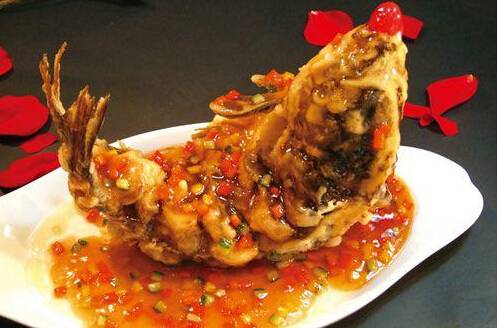
Sweet‐and‐Sour Carp
1.1.2 Canton/Guangdong Cuisine (Yue Cuisine)
The raw materials of Yue (Guangdong) Cuisine are abundant and peculiar. Cantonese consider the snake, cat, and pangolin to be the most delicious food. The light and mellow sauces are the crucial seasoning that makes Guangdong dishes tender and slightly sweet. Most widely used sauces include hoisin sauce, oyster sauce, plum sauce, and sweet and sour sauce. Chrysanthemum Fish, Braised Snake Porridge, and Roast Suckling Pig are popular dishes of the local menu. The world famous Guangdong Dim Sums are worth tasting as well.
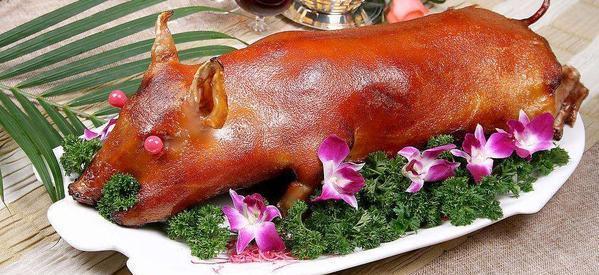 Roast Suckling Pig
Roast Suckling Pig1.1.3 Szechwan/Sichuan Cuisine (Chuan Cuisine)
Characterized by Three Peppers, Seven Tastes, and eight flavors, Chuan (Sichuan) Cuisine enjoys a high reputation worldwide. The delicate use of garlic, chili peppers, and Sichuan peppercorn attributes the success to the hotness, sourness, and numbness of Sichuan cuisine. The ingredients used are great in variety, including poultry, pork, beef, fish, tofu, and vegetables. Its cooking methods contain baking, sautéing, and steaming. However, Lamp‐shadow Beef, Kung Pao Chicken, Mapo Tofu, and Fried Pork Ribs with Salted Pepper are highly recommended.
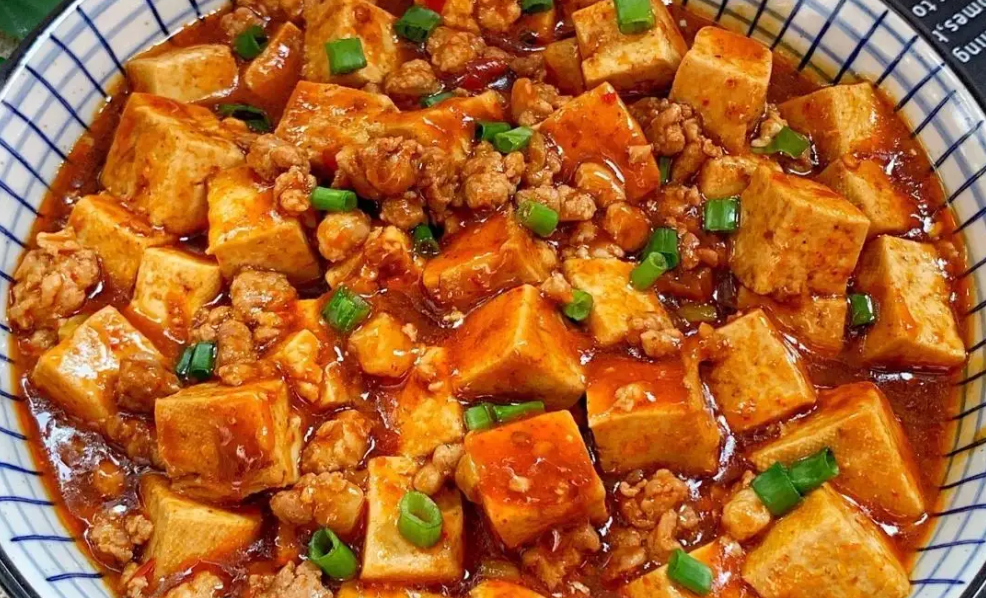
Mapo Tofu
1.1.4 Hunan Cuisine (Xiang Cuisine)
Well known for its spices, a crispness and savory flavor, Xiang (Hunan) cuisine pays attention to its hot spicy flavor, fresh aroma, and deep color. The smoked and cured goods are used much more frequently in its dishes. Equally as important to Xiang cuisine is the art of cutting meats and vegetables, both to please the eye and to enhance the tenderness. Common cooking techniques of Xiang cuisine include stewing, frying, pot‐roasting, braising, and smoking. What’s more, the menu of Xiang cuisine changes with the seasons.
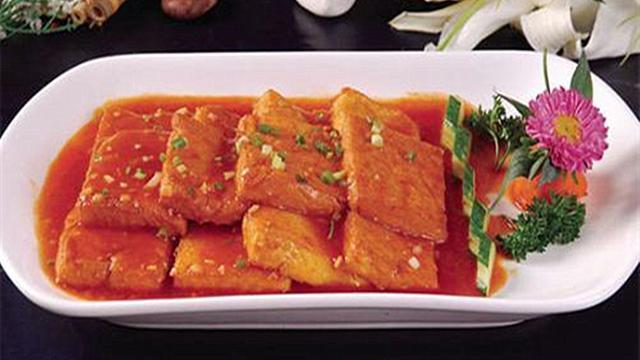
Zu’an Tofu
1.1.5 Jiangsu Cuisine (Su Cuisine)
Su (Jiangsu) cuisine consists of the typical styles of Yangzhou, Nanjing, Suzhou, and Zhenjiang dishes. It is famous worldwide for its distinctive style and fresh taste and remains a major part of the state banquet in China. Precise material choice and cooking schedule contributes to its moderate saltiness and sweetness. Freshwater fish, seafood, and a rich variety of local vegetables are widely used in Su Cuisine. There is an excellence in cooking methods such as stewing, simmering, baking over a slow fire, steaming, sautéing (frying food quickly in a little hot fat), stir‐frying (frying very quickly over high heat), and skillful braising in mud.
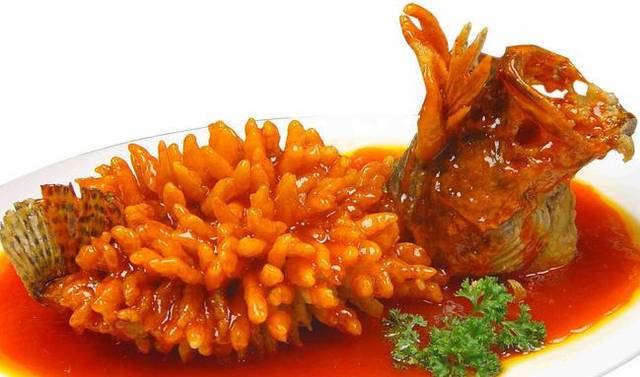
Squirrel Fish
1.1.6 Zhejiang Cuisine (Zhe Cuisine)
Featured with fresh, delicate appearance and soft flavor with mellow fragrance, Zhe (Zhejiang) cuisine consists of at least three styles − Hangzhou style, Shaoxing style, and Ningbo style. Hangzhou style is characterized by rich variations and the use of bamboo shoots, Shaoxing style is specializing in poultry and freshwater fish, and Ningbo style is specializing in seafood. Significant dishes here are West‐lake Braised Fish in Vinegar, Sweet and Sour Pork Fillet, and West Lake Beef Soup.
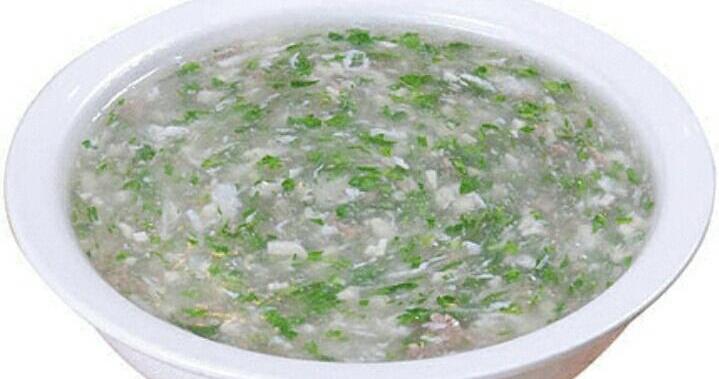
West Lake Beef Soup
1.1.7 Fujian Cuisine (Min Cuisine)
The history of Min (Fujian) cuisine dates back 5000 years. Min cuisine features fine cutting techniques, alternative soups, unique seasonings, and exquisite cooking. Min Cuisine pays great attention to utilizing soup and is often served in a broth or soup. Cooking techniques include braising, stewing, steaming, and boiling. Another light spot of Min Cuisine is the liquor or wine-soaked dishes. Among all the dishes, Buddha Jumping over the Wall, Dongbi Dragon Pearl, and Fried Xi Shi’s Tongue rank on the top. Buddha Jumping over the Wall is known for its rich ingredients, including various meats (such as pork, chicken, and seafood like abalone and sea cucumber), mushrooms, and other delicacies, all cooked together in a flavorful broth. The name suggests that the aroma of the dish is so enticing that even a Buddha would be tempted to jump over a wall to taste it.
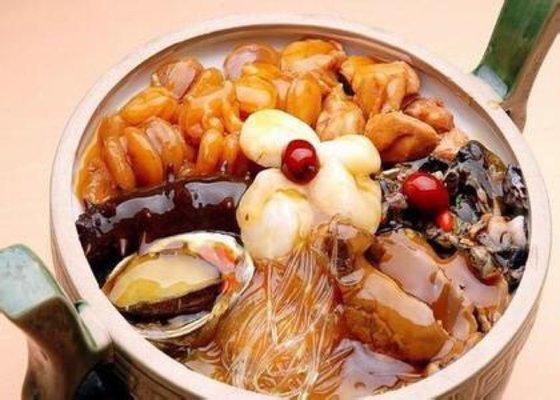
Buddha Jumping over the Wall
1.1.8 Anhui Cuisine (Hui Cuisine)
Hui (Anhui) cuisine is rooted in the native cooking styles of the Huangshan Mountains area in China and is akin to Jiangsu cuisine. One of Hui Cuisine’s notable features is that it emphasizes use of a wide variety of local herbs and vegetables, which makes it a healthy cuisine. What’s more, Hui Cuisine is particular about controlling cooking time and temperature. The typical Hui Cuisine includes Braised Turtle with Ham and Fuliji Grilled Chicken.
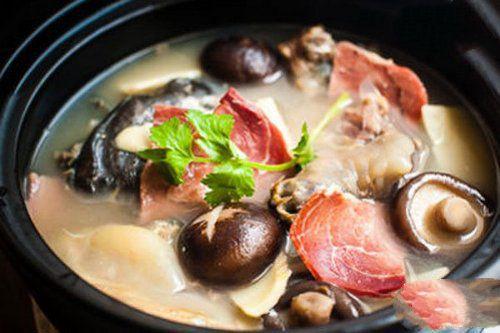
Braised Turtle with Ham
Watch the video to know more about the eight cuisines in China
Watch the video about the five most important elements of Chinese cooking
1.2 Chinese Tea
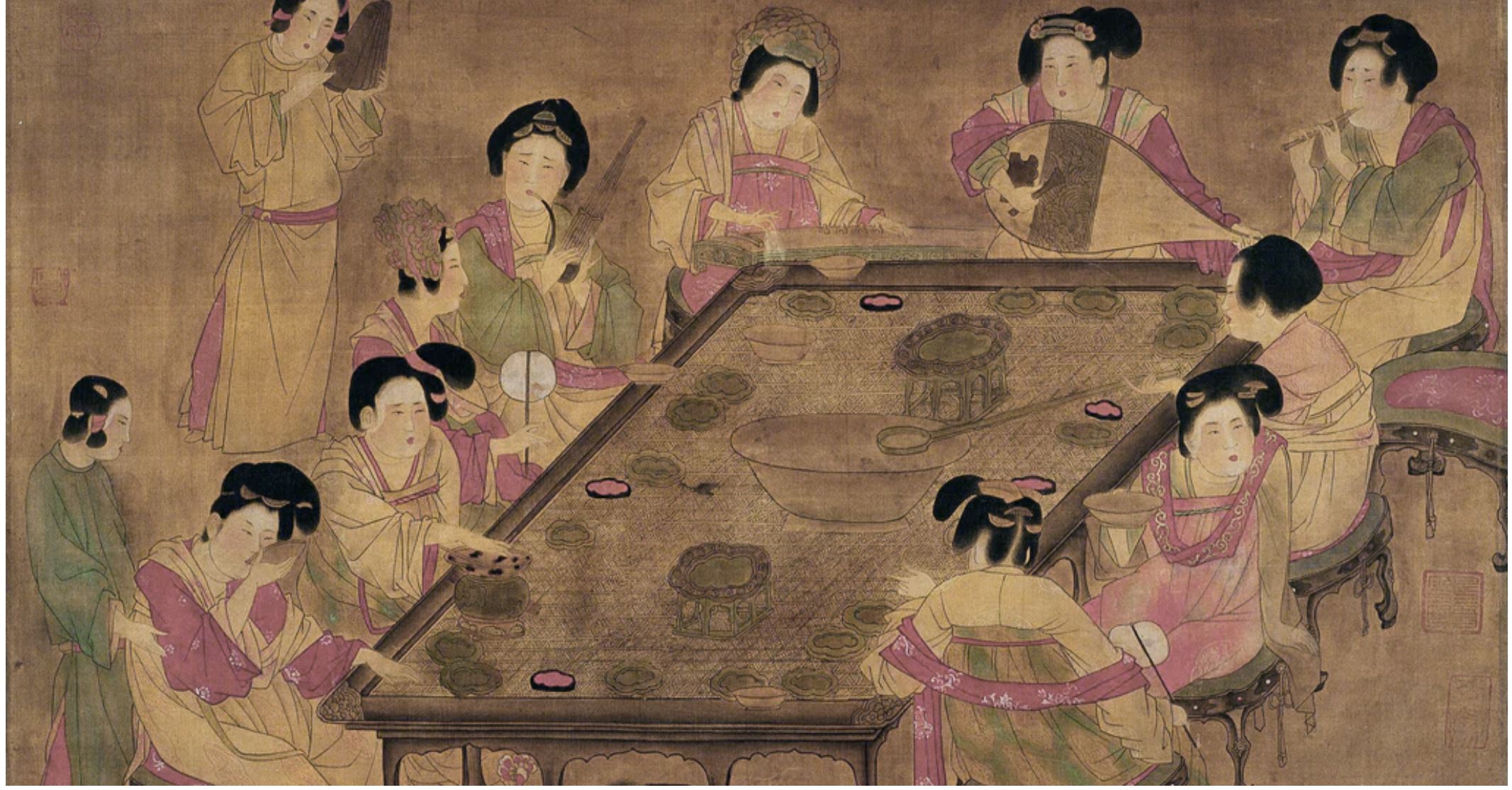 The Tang Dynasty painting “Palace Music” depicts court ladies brewing and enjoying tea, playing music, and feasting merrily.
The Tang Dynasty painting “Palace Music” depicts court ladies brewing and enjoying tea, playing music, and feasting merrily.
The earliest monograph on tea in China is the “Classic of Tea” (茶经Cha Jing) by Lu Yu (陆羽, 733 AD – 804 AD) of the Tang dynasty. He summarized the experiences of tea cultivation and drinking before the Tang dynasty and shared his personal insights. Lu Yu discussed the development of tea from ten aspects: the origin of tea, tea tools, production, utensils, brewing, drinking, distribution, essentials of tea, and illustrations. Hence, Lu Yu is revered as the “Sage of Tea” and the “Tea Immortal.” Lu Yu emphasized the quality of water for brewing tea, categorizing the springs he had tasted into twenty grades based on their quality, as good water quality has long-term health benefits.
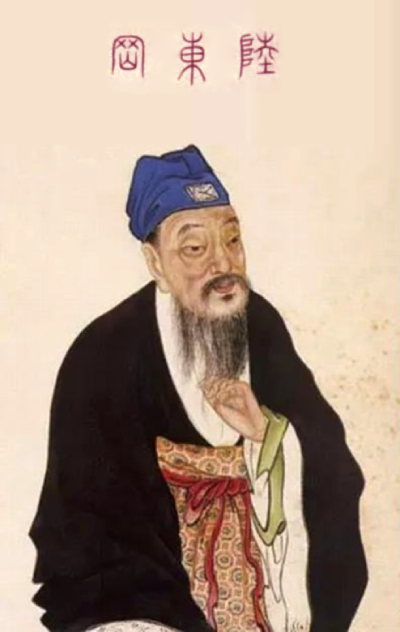
A Portrait of Lu Yu (陆羽)
Please watch the video about the history of tea
Watch the video about how to brew Chinese tea
1.3 Chinese alcohol and liquor
In China, the history of alcohol predates that of tea. Archaeological evidence confirms that alcohol existed as early as the Neolithic period of the primitive society in China. According to legend, during the Xia Dynasty (2146 BC – 1675 BC), Du Kang (杜康) used fruits to brew fruit alcohol. Therefore, Du Kang is regarded as the ancestor of brewing, and his wine was considered the finest brew. Gradually, “Du Kang” became synonymous with fine wine.
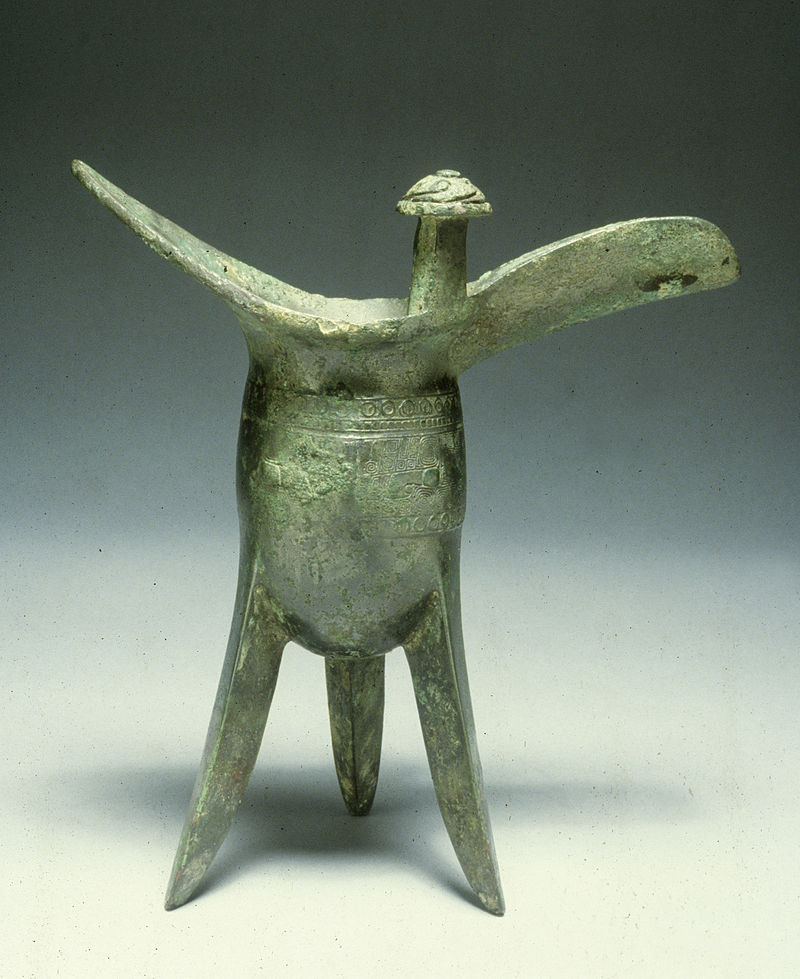
Wine vessel (Jue 爵) in Western Han Dynasty
Before the Qin dynasty (221 BC- 207 BC), the method of fermenting wine with fermentation starters had already been invented. In 1974, a jar of ancient wine was discovered in the tomb of King Zhongshan from the Warring States period (475 BC – 221 BC) in Hebei Province. When the lid was opened, the aroma of the fermentation starters was still present. By the Han Dynasty (206 BC – 8 AD), brewing techniques had advanced continuously, and there was a focus on using sweet spring water to make good wine. “Qi Min Yao Shu” (齐民要术, Essential Techniques for the Common People), the most completely preserved ancient Chinese book on agricultural and pastoral practices, written by Jia Sixie during 533 AD to 544 AD, recorded nine methods of making fermentation starters. After the Tang (618 AD – 907 AD) and Song (960 AD – 1279 AD) Dynasties, not only did the varieties of wine increase, but various medicinal herbs were also added to wine, further enhancing its efficacy.
The cultural function of wine in social life mainly includes its use in sacrificial rituals and as a source of pleasure in drinking. Since ancient times, wine has been an essential item for sacrifices, alliances, celebrating victories, and entertaining guests, serving as a means of fostering relationships and shared enjoyment. The Shang Dynasty (1675 BC – 1029 BC) was an era written recorded where drinking was prevalent; King Zhou of Shang “made a lake of wine and a forest of meat, drinking all night,” which eventually led to the downfall of his kingdom. Later, other kings have issued strict bans on drinking, warning people not to indulge. However, the fondness for alcohol has thrived throughout history. By the Wei (220 AD – 265 AD) and Jin (265 AD – 316 AD) periods, due to the chaotic times and unstable social life, the upper echelons of society were filled with a sense of decline, leading to corruption and indulgence in life. Many famous writers and poets of the time were known for their excessive drinking, using it as a means to express dissatisfaction with the reality of social life and to forget worldly concerns through drunkenness.
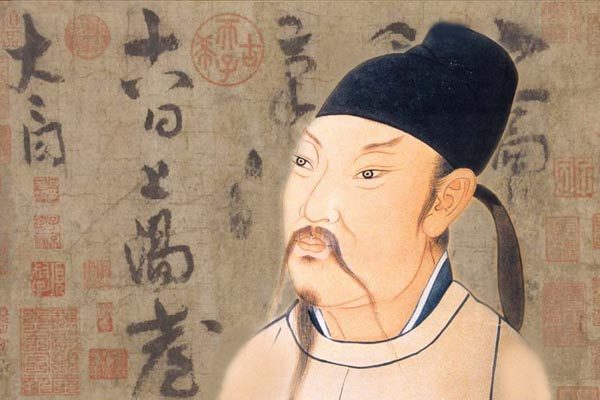
The famous Tang Dynasty poet Li Bai 李白 (701 AD – 762 AD)
The most distinctive feature of alcohol in Chinese culture is its close association with literature. Alcohol is not only a subject of literary depiction but also an assistant in literary creation. Ancient literati often drank while composing poems, resulting in countless poetic works. A representative of this is the famous Tang Dynasty poet Li Bai 李白 (701 AD – 762 AD), who was one of the greatest and most important poets in Chinese history. Li Bai was known for his love of drinking. After drinking, his creative inspiration surged, earning him the fame of “a hundred poems after a jug of wine.” Of course, the alcohol consumed by the ancients was not very high in alcohol content or strength.
Please watch the following video to learn about the classification of Chinese alcohol, the four major types of Chinese baijiu, China’s national liquor, the role of alcohol in dietary culture, and drinking etiquette at the dining table.
1.4 Chinese dinning etiquette
Chinese dining etiquette is deeply rooted in the country’s culture and traditions. Here are some of the dinning etiquettes you need pay attention when you have dinner with Chinese people. The seating arrangement always show respects to the high ranked person and elder generation. The most honored position is usually the one facing the entrance and guests of honor are typically seated to the right of the host. Elders are typically served first and should be shown respect throughout the meal. Younger people often defer to elders when selecting food. Food is aften served on a Lazy Susan (a rotating tray) for easy sharing if peple dine in the restaurant. Guests should wait for the host to start eating before they begin and it’s polite in Chinese people’s eyes to serve others before serving yourself. Chinese people use chopsticks and don’t stick them upright in a bowl of rice, as it resembles incense sticks used in funeral. Don’t point with chopsticks or tapping them on the bowl. In a Chinese dinner, it’s very common to make a toast. It’s polite to clink glasses lower than those of elders or superior as a sign of respect. When someone toasts you, it’s courteous to reciprocate later in the meal.
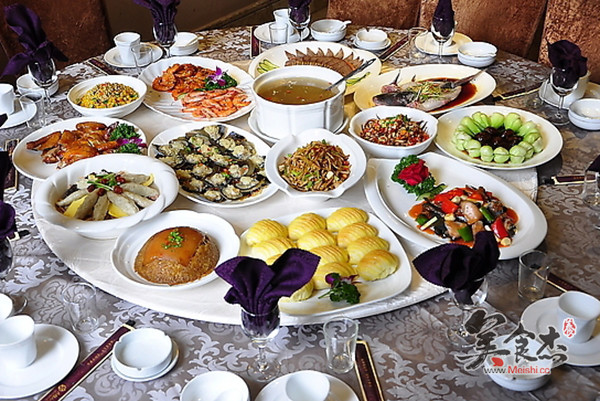
A Lazy Susan table with Chinese dishes
This video gave you a clear introduction on the Chinese dinner etiquette, including where to sit, how to order, how to pour tea and show gratitude, chopsticks handling, how to eat your food, how to eat fish, and how to pay the bill.
1.5 American Chinese dishes
You might have tried Chinese food in US. Do you know there are significantly differences between traditional Chinese dishes and American Chinese dishes, including ingredients, flavors, preparation methods and eating habit. Traditional Chinese dishes use a wide variety of fresh ingredients, including unique vegetables (e.g., bitter melon, lotus root), meats (e.g., duck, pork belly), seafood, and tofu. Spices and condiments like ginger, garlic, scallion, soy sauce, rice wine, and various types of vinegar are commonly used. But it’s more common to use readily available and familiar ingredient in the US., such as broccoli, bell peppers, and carrots. Sweet sauces, like sweet and sour sauce, are more prevalent.
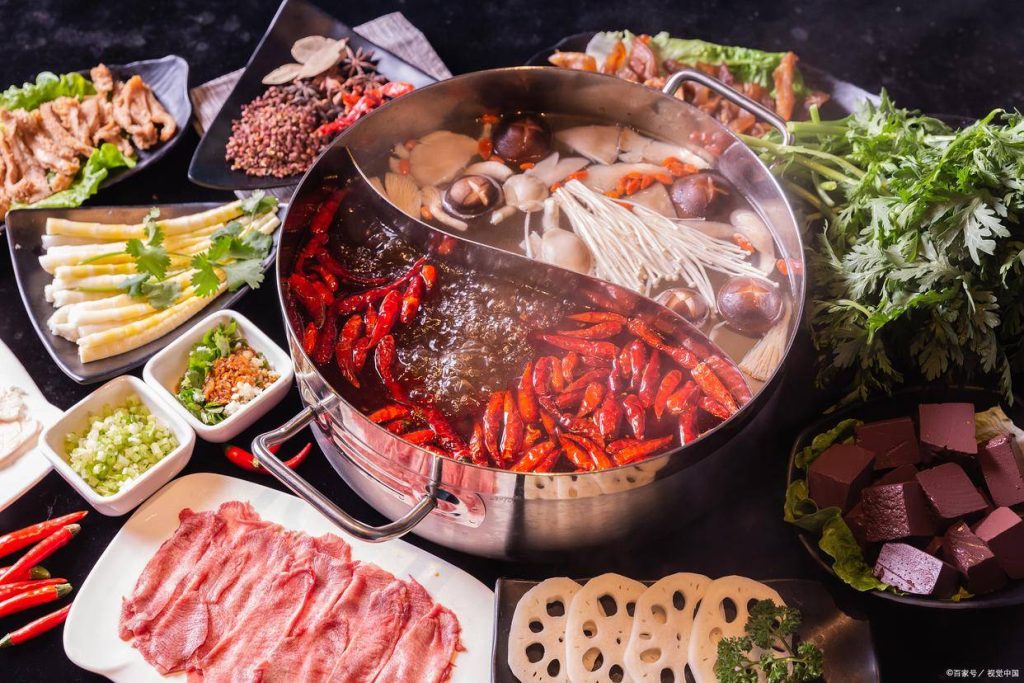
Sichuan Hotpot (火锅)
Concerning the favors, traditional Chinese dishes highlight a balance of flavors, including sweet, sour, bitter, salty, and umami. Different regional cuisines (Cantonese, Sichuan, Hunan, etc.) have distinct flavor profiles, such as the spiciness of Sichuan cuisine or the subtlety of Cantonese cuisine. As you know, American Chinese dishes tend to be sweeter and less spicy, like orange chicken and sweet and sour chicken. Flavors are often simplified to appeal to a broader American palate, resulting in dishes that are more uniform in taste.
As to the preparation methods, traditional Chinese dishes employ a variety of cooking techniques, including steaming, braising, boiling, stir-frying, and deep-frying, roasting, simmering, pan-frying, marinating, stewing, etc. The emphasis is on preserving the natural flavors and textures of the ingredients. Comparatively, it’s more commonly focus on stir-frying and deep-frying when preparing for the American Chinese dishes. Dishes are often prepared quickly, and sauces are frequently thicker and more pronounced in flavor.
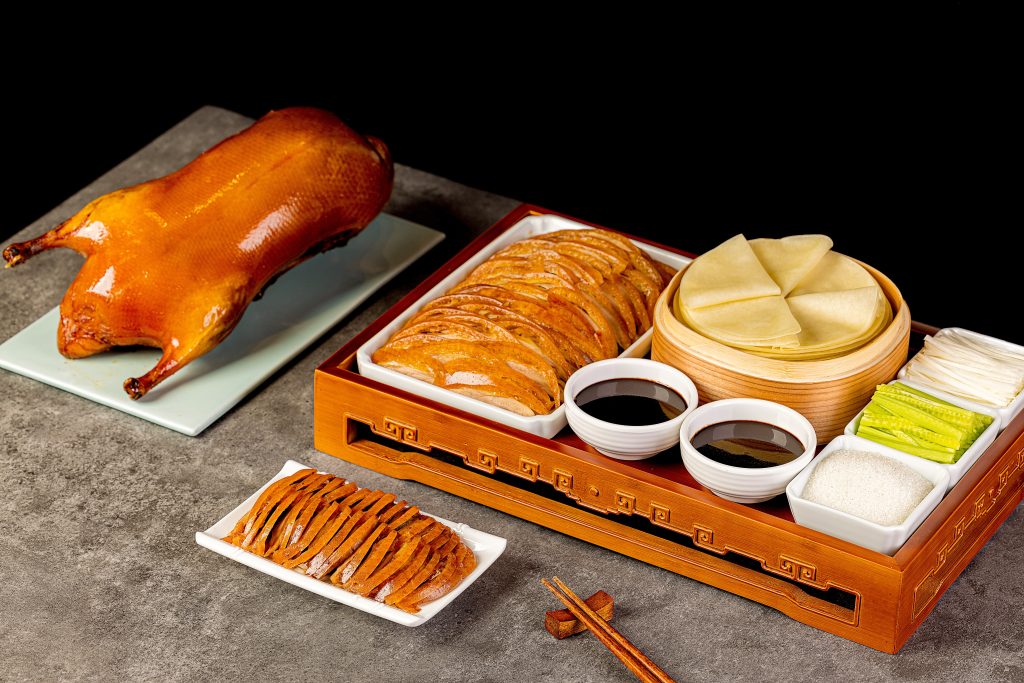
Beijing Roasted Duck (北京烤鸭)
When eating the dishes, Chinese people emphasize visual appeal and harmony, often featuring a careful balance of colors and textures. And dishes are typically served family-style for sharing. To cater to American eating habits, the American Chinese dishes are normally served in individual portions rather than family-style. Presentation might be less of a focus compared to traditional dishes.
- This section is adopted from chapter 9 Textural Characteristics of Chinese Foods by Long Huang in Nishinari (2020) ↵

